|
 When
you travel to any foreign country, it can be hard
to get the lay of the land. So Persia Tours provides
for your reference a mini-guide to navigating
the Persian way of life. Read it now to acquaint
yourself with the basics of how things get done
in Iran. You can read through the whole guide
by using the navigation at the left, or skip around
to read the parts that interest you more. If there
are topics that aren't covered in our mini-guide,
please use our Forum to ask for advice or further
information. Or contact one of Persia Tours. We're
here to help. When
you travel to any foreign country, it can be hard
to get the lay of the land. So Persia Tours provides
for your reference a mini-guide to navigating
the Persian way of life. Read it now to acquaint
yourself with the basics of how things get done
in Iran. You can read through the whole guide
by using the navigation at the left, or skip around
to read the parts that interest you more. If there
are topics that aren't covered in our mini-guide,
please use our Forum to ask for advice or further
information. Or contact one of Persia Tours. We're
here to help.
When you are ready to leave for Iran click on
the download link below to save and print out
the Persia Tours Quick Reference Guide.
Asia: Middle
East : Iran
Location
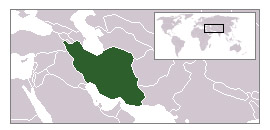
Flag
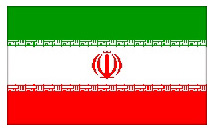
Quick Facts
Capital: Tehran
Government: Islamic Republic
Currency:Iranian rial (IRR)
Area: 1.648 million km2
Population: 66,622,704 (July 2002 est.)
Language: Persian and dialects 58%, Turkish
and dialects 26%, Kurdish 9%, Luri 2%, Balochi
1%, Arabic 1%, Turkish 1%, other 2%<
Religion: Shi'a Muslim 89%, Sunni Muslim
10%, Zoroastrian, Jewish, Christian, and Baha'i
1%
Electricity: 220V/50Hz (European plug)
Calling code: +98
Internet TLD:.ir
Time zone: UTC+3:30
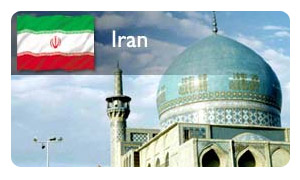 Iran
(Persian) is a large country in the Middle East,
between the Gulf of Oman, the Persian Gulf, and
the Caspian Sea, it is bordered by Iraq to the
west, Turkey, Azerbaijan's Naxcivan enclave, Armenia,
and Azerbaijan to the northwest, Turkmenistan
to the northeast, Afghanistan and Pakistan to
the southeast. Iran
(Persian) is a large country in the Middle East,
between the Gulf of Oman, the Persian Gulf, and
the Caspian Sea, it is bordered by Iraq to the
west, Turkey, Azerbaijan's Naxcivan enclave, Armenia,
and Azerbaijan to the northwest, Turkmenistan
to the northeast, Afghanistan and Pakistan to
the southeast.
Regions
Ardabil, Azarbayjan-e Gharbi, Azarbayjan-e Sharqi,
Bushehr, Chahar Mahall va Bakhtiari, Isfahan,
Fars, Gilan, Golestan, Hamadan, Hormozgan, Ilam,
Kerman, Kermanshah, North Khorasan(Khorasan-e-Shomali),
South Khorasan(Khorasan-e-Jonoobi), Khuzestan,
Kohkiluyeh va Buyer Ahmad, Kordestan, Lorestan,
Markazi, Mazandaran, Qazvin, Qom, Semnan, Sistan
va Baluchestan, Tehran, Yazd, Zanjan
Cities
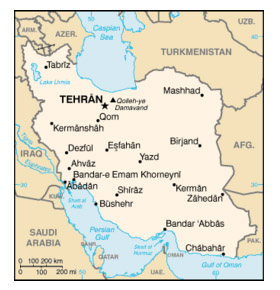
Map of Iran
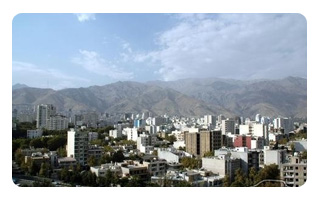 -
Abadan -
Abadan
- Ahwaz, the capital of Khoozestan province :
A warm city in south-west of Iran, Karoon river
divides Ahwaz into two parts, there is a famous
bridge on Karoon in center of Ahwaz named Pol-e
Mo'alagh (Suspended Bridge)
- Bandar Abbas, the capital of Hormozgan province
: A major fishing and commercial port in the middle
of the Strait of Hormoz.
- Bushehr, the capital of Bushehr province : "Bandar-e
Bushehr" is a major fishing and commercial
port on the Persian Gulf.
- Esfahan's (Isfahan) stunning architecture, tree-lined
boulevards with relaxed, tree-shaded sidewalks
make it the undisputed highlight of Iran cities.
The capital of Esfahan province, and once during
the rule of the Safavid dynasty in 17th century
the country capital. In Iranians folklore the
name Esfahan usually gets rhymed with the alias
"Nesf-e-Jahan", meaning "Half of
the World" for its architectural variety
and outstanding beauty.
- Hamadan, the Capital of Hamadan Province: Situated
on the slopes of Mount Alvand at the elevation
of 1800 meters.
- Kashan, in the Esfahan province: An oasis-like
city on the borders of the desert. It can be accounted
as one of the most archaic cities in Iran.
- Kerman, the capital of Kerman province: On the
edge of Loot desert. Its construction is attributed
to Ardashir I of Sassanid.
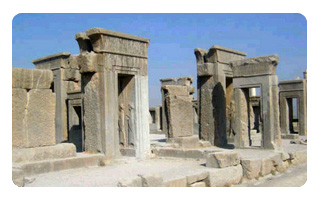 -
Kermanshah, the capital of Kermanshahan province:
One of the ancient cities of Iran constructed
by Bahram of Sassanids in the 4th century CE. -
Kermanshah, the capital of Kermanshahan province:
One of the ancient cities of Iran constructed
by Bahram of Sassanids in the 4th century CE.
- Kish Island, a free trade zone in the Persian
Gulf, it is regarded as a consumer's 'paradise',
with numerous malls, shopping centres, tourist
attractions, and resort hotels. Kish is the home
of Dariush Grand Hotel, a magnificent hotel in
Iran and one of the top ten best hotels in the
Middle East.[1]
- Mashhad, the capital of Khorasan province: In
Arabic, the name Mashhad means the place of martyrdom,
which about this special city is the place where
Imam Reza - the eighth Imam of muslims - martyred
and so his shrine is placed there.
- Nowshahr, is a port city in the province of
Mazandaran in northern Iran. It is known for its
humid climate and immense natural beauty, and
is therefore an attractive destination for domestic
tourism.
- Qazvin, of the Qazvin province. Was a capital
city in Ancient Persia. Vibrant city close to
Tehran.
- Qeshm Island is Iran's largest and the Persian
Gulf's largest island. Qeshm island is famous
for its wide range of ecotourist attractions such
as the Hara marine forests. According to environmentalists,
about 1.5% of the world birds and 25% of Iran's
native birds annually migrate to Hara forests
which are the first national geo park.
- Rafsanjani, a green gold city.
- Rasht, the capital of Gilan province: A very
important city in the Caspian Sea region.
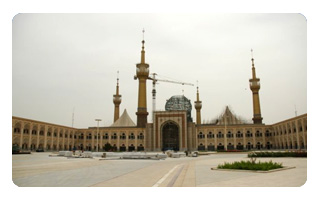 -
Shiraz, the capital of Fars province : A city
with delicate climate which has always been famous
all through the history for two things: First,
numerous poets once lived there so it was some
sort of capital for Persian literature and second,
in Persian litrature - specially Hafiz poems -
Shiraz is mostly famous for its red wine. -
Shiraz, the capital of Fars province : A city
with delicate climate which has always been famous
all through the history for two things: First,
numerous poets once lived there so it was some
sort of capital for Persian literature and second,
in Persian litrature - specially Hafiz poems -
Shiraz is mostly famous for its red wine.
- Tabriz, the capital of Eastern Azarbaijan province:
In the ancient time, the name was "Aturpatgan"
or "Azargoshnasp" where the Zoroastrian
fire temples placed there.
- Tehran, the capital of Tehran province and the
country capital is relatively a young city which
suffers off-limits growth. A very beautiful city
in nature which suffers the horrendous traffic
and air pollution nowadays.
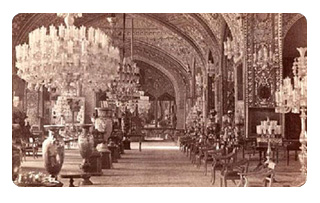 -
Urmia, the capital of Western Azarbaijan province:
The name of the city was changed to "Rezayieh"
during the Shah era but was restored after the
revolution. In Saurian language it means "The
place of water". The city is located near
a lake called Uremia Lake which is the second
saltiest lake in the world. Uremia city itself
is surrounded by vast vineyards. You can also
reach either of the Turkey or Iraq borders by
driving an hour by car. -
Urmia, the capital of Western Azarbaijan province:
The name of the city was changed to "Rezayieh"
during the Shah era but was restored after the
revolution. In Saurian language it means "The
place of water". The city is located near
a lake called Uremia Lake which is the second
saltiest lake in the world. Uremia city itself
is surrounded by vast vineyards. You can also
reach either of the Turkey or Iraq borders by
driving an hour by car.
- Yazd, the capital of Yazd province: A city placed
in the middle of desert. These circumstances accomplished
some kind of special architectural theme which
uses water streams in underground rooms in houses
and wind-towers to cool down the house in desert
hot summer day.
- Zahedan, the capital of Sistan va Baluchestan
: A city near Pakistan's border with a multi-tribal
texture.
- Zanjan, the capital of Zanjan province.
Other destinations
- Babol, is located in north of Iran close to
the Caspian Sea area in Mazandaran province.
- Nishabour, is located in northeast of Iran close
to Mashad in Khorasan province. This city is one
of the most historic cities in Iran.
Understand
Known as Persia until 1935, Iran became an Islamic
republic in 1979 after the ruling shah was forced
into exile. Conservative clerical forces subsequently
crushed westernizing liberal elements. Militant
Iranian students seized the US Embassy in Tehran
on 4 November 1979 and held it until 20 January
1981. During 1980-88, Iran fought a bloody, indecisive
war with Iraq over disputed territory. Key current
issues affecting the country include the pace
of accepting outside modernizing influences and
reconciliation between clerical control of the
regime and popular government participation and
widespread demands for reform. Unemployment amongst
the young is also an issue, due to Iran having
the largest percentage of young people in the
world.
Climate
Mostly arid or semiarid, subtropical along Caspian
Sea coast.
Landscape
Rugged, mountainous rim; high, central basin with
deserts, mountains; small, discontinuous plains
along both coasts. The highest point is Mount
Damavand (5,671 meters).
Get in
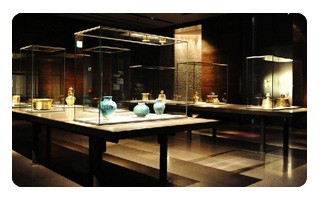 A
valid passport and visa are required for travel
through Iran. In the year 2006 the rules for obtaining
tourist visa changed and it has become much easier
for many nationals to get in to Iran by obtaining
tourist visa at the airport. At the Imam Khomeini
and Mehrabad airports in Tehran, and also the
airports at Mashad, Shiraz, Tabriz and Esfahan,
issues tourist visas for one weeks stay in Iran
for holders of ordinary passports from the states
below: A
valid passport and visa are required for travel
through Iran. In the year 2006 the rules for obtaining
tourist visa changed and it has become much easier
for many nationals to get in to Iran by obtaining
tourist visa at the airport. At the Imam Khomeini
and Mehrabad airports in Tehran, and also the
airports at Mashad, Shiraz, Tabriz and Esfahan,
issues tourist visas for one weeks stay in Iran
for holders of ordinary passports from the states
below:
Albania, Armenia, Australia, Austria, Azerbaijan,
Bahrain, Belarus, Belgium, Bosnia and Herzegovina,
Brazil, Brunei, Bulgaria, China, Colombia, Croatia,
Cuba, Cyprus Denmark, Finland, France, Georgia,
Germany, Greece, Hungary, India, Indonesia, Ireland,
Italy, Japan, Kazakhstan, Democratic People's
Republic of Korea, Republic of Korea, Kuwait,
Kyrgyzstan Lebanon, Luxembourg, Malaysia, Mexico,
Mongolia, Netherlands, New Zealand, Norway, Oman,
Palestine, Peru, Philippines, Poland, Portugal,
Qatar, Romania, Russian Federation, Saudi Arabia,
Singapore, Slovakia, Slovenia, Spain, Sweden,
Switzerland, Syria, Tajikistan, Thailand, Turkmenistan,
Ukraine, United Arab Emirates, Uzbekistan, Venezuela,
Vietnam.
It is possible to get a extension of the one week
visa which are issued by Aliens Affairs Bureau
law enforcement forces.
Although it has become remarkably easier to get
a tourist visa in recent years, whether the process
takes one Day or one month depends largely on
your nationality and the staff of the embassy
you are applying to. Your best bet is to apply
to the Iranian embassy in your own country at
least three months before your departure, but
it is possible in other countries. Women need
to make sure they are veiled in their submitted
passport-sized photos. Nationals of Israel are
currently barred from entering Iran for any reason.
Citizens of Japan, Korea, most EU and some Arab
countries can now get a one-week tourist visa
upon their arrival in major airports for US$50
cash. US citizens can apply for a visa at the
Iranian Interest Section of the Pakistani Embassy
in Washington, DC. Transit visas are usually easier
to get than tourist visas (usually for one or
two weeks) and very useful for people traveling
between Europe and South Asia. Chances are your
bags won't be searched for salacious material,
but if found, it will be confiscated and will
complicate your arrival. Don't try to bring in
any magazines (including fashion magazines) or
books that might offend strict Islamic sensibilities
or criticize the government.
By plane
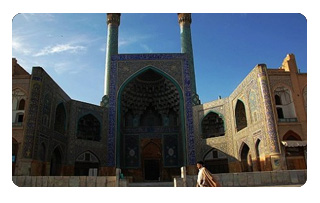 Most
overseas travellers from Europe will arrive at
Mehrabad airport in Tehran. By now most flights
from the Middle East, Central and South Asia land
at the new Imam Khomeini International Airport
based 37km southwest of Tehran and it is planned
to move all international flights to this airport
within the next few years. There are 70 smaller
regional airports, for example those in Shiraz,
Mashhad, and Isfahan, and these have daily flights
to many international destinations. Most
overseas travellers from Europe will arrive at
Mehrabad airport in Tehran. By now most flights
from the Middle East, Central and South Asia land
at the new Imam Khomeini International Airport
based 37km southwest of Tehran and it is planned
to move all international flights to this airport
within the next few years. There are 70 smaller
regional airports, for example those in Shiraz,
Mashhad, and Isfahan, and these have daily flights
to many international destinations.
Dubai has scheduled flights to many Iranian cities,
including Tehran, Shiraz, Esfahan, Kerman, Lar,
Mashhad, Tabriz, Kish Island, Bandar Abbas, Bushher,
Zahedan, and is therefore worth considering travelling
to Iran from. Flights are operated by Emirates
(for Tehran), Iran Air, Iran Aseman Airlines,
Mahan Air and other Iranian companies. Fares are
relatively cheap on Iranian carriers, ranging
from $100 to $250 for a return trip depending
on your destination and time of booking.
Iran Air connects Tehran with some of the major
European cities as well as destinations in Asia
and Middle East. European companies landing in
Tehran include British Airways, Lufthansa, KLM,
Alitalia, Turkish Airlines, Austrian Airlines,
Aeroflot and Air France, so finding a flight to
Iran should not be too difficult.
There are no direct flights from North America
at present but you could travel via either Europe
or Dubai. Visitors from Australia or New Zealand
should consider travelling via Dubai.
By rail
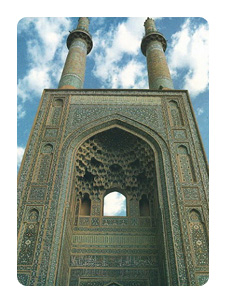 International
passenger trains for Iran run weekly to/from Istanbul
(Turkey) and Damascus (Syria). International
passenger trains for Iran run weekly to/from Istanbul
(Turkey) and Damascus (Syria).
- The Istanbul service runs via Ankara, includes
a ferry over Lake Van, crosses the Iranian border
then stops at Tabriz before arriving in Tehran.
The journey takes 69 hours (3 nights travelling).
Services leave Istanbul WednesDay evening (arriving
SaturDay evening) and Tehran ThursDay evening
(arriving SunDay evening). The train includes
couchettes and a dining car.
- The Syria service does not cross Iraq, stopping
at Aleppo before crossing the Turkish border,
heading to Lake Van and running along a similar
route to the Istanbul service. This journey takes
54 hours (2 nights travelling) leaving Damascus
MonDay mornings (arriving Tehran WednesDay evening)
and leaving Tehran at the same time (MonDay) with
corresponding arrival in Damascus (WednesDay evening).
Couchettes are available between Lake Van and
Tehran, but the Syrian leg between Damascus and
Lake Van contains only reclining seats. A dining
car is only occasionally provided.
- The Quetta-Zahedan line connects Pakistan and
Iran by rail. There is no connection of Zahedan
railway with the rest of the Iranian Railway system;
this means that you must take bus or other transportation
from Zahedan to Bam which has railway. The railway
from Bam (Kerman) is being expanded to reach Zahedan
and will probably be finished in 2009. A train
leaves every 1th and 15th of each month from Quetta
to Zahedan and the journey takes 11 hours.
By car
Many people drive to Iran via Turkey, in the absence
of cheap flights.
By bus
You can find Seir-o-Safar agencies in Istanbul,
Antalya and Ankara to buy cheap bus tickets for
Tehran.
By boat
There are some scheduled services from Baku to
Bandar Anzali on the Caspian Sea and from cities
on the Persian Gulf to cities on the Iranian coast.
They are usually of low quality.
Get around
While not as comfortable or fast as Europe or
North America, Iranian transport is of high quality,
and is very affordable. There are few places the
very cheap buses don't travel to, the train network
is limited but comfortable and reasonably priced
and travel by air is laughably cheap, especially
by international standards(in fact one of the
cheapest in the world).
By plane
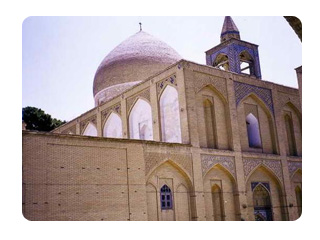 For
anyone on a tight deadline, affordable domestic
air services are a blessing. The major national
carrier Iran Air, and its semi-private competitors
(Iran Aseman Airlines - Aseman meaning "sky"
in Persian , Mahan Air, Kish Air, etc.) link Tehran
with most regional capitals and offer inter-regional
flights for no more than US $30. For
anyone on a tight deadline, affordable domestic
air services are a blessing. The major national
carrier Iran Air, and its semi-private competitors
(Iran Aseman Airlines - Aseman meaning "sky"
in Persian , Mahan Air, Kish Air, etc.) link Tehran
with most regional capitals and offer inter-regional
flights for no more than US $30.
Their services are frequent, reliable and safe
are definitely worth considering to skip the large,
monotonous distances within Iran. Planes are aging,
and maintenance and safety procedures are sometimes
well below western standards, but it still remains
the safest way to get around Iran providing the
huge death toll on the roads.
Tupolev Tu-154 and other Russian planes are still
used by some carriers (Iran Airtours notably).
However, the odds are you will board a Shah-era
B727 or some more recent Fokker, ATR or even Airbus
A310 if you're lucky. Busy domestic routes are
sometimes flown by B747SP, and the extra boarding
and run-up time are worth the thrill of flying
in one of the last of these shortened Jumbos still
operated in the world.
Tickets can be bought at airports or travel agents
dotted through the most major cities. Book early
during the summer months of August and September
since finding seats at short notice is virtually
impossible.
You can also find domestic tickets in some Iran
Air offices abroad (Dubai for instance), but expect
to pay a little more due to the change rate applied.
Domestic tickets for other companies must be bought
inside Iran.
By bus
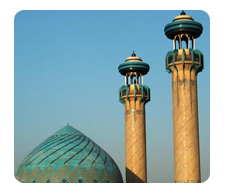 The
Iranian domestic bus network is extensive and
thanks to the low cost of fuel, very cheap. In
fact the only drawback is speed: the government
has limited buses to 80 km/h to combat lead-footed
bus drivers so long haul trips such as Shiraz
to Mashhad can take up to 20 hours. The
Iranian domestic bus network is extensive and
thanks to the low cost of fuel, very cheap. In
fact the only drawback is speed: the government
has limited buses to 80 km/h to combat lead-footed
bus drivers so long haul trips such as Shiraz
to Mashhad can take up to 20 hours.
There is little difference between the various
bus companies, and most offer two classes: 'lux'
or 'Mercedes' (2nd class) and 'super' or 'Volvo'
(1st class). First class buses are air-conditioned
and you will be provided with a small snack during
your trip, while second class services are more
frequent. Given the affordability of first class
tickets (for example IR 33,000 from Esfahan to
Shiraz), there's little financial incentive to
opt for the second class services, especially
in summer.
You can buy tickets from the bus terminals or
ticket offices up to a week in advance, but you
shouldn't have a problem finding a seat if you
turn up to the terminal an hour or so before your
intended departure time.
Most cities operate comprehensive local bus services,
but given the low cost of taxis and the difficulties
of reading Persian-language signs (which, unlike
road signs, do not have English counterparts)
and route numbers, they are of little use to the
casual traveler. If you're cash strapped and brave
enough to try, however, remember that the buses
are segregated. Men enter via the front or rear
door and hand their ticket to the driver before
taking a seat in the front half of the bus. Women
and children should hand their ticket to the driver
via the front doors (without actually getting
on) before entering via the rear door to take
a seat at the back. Tickets, usually around IR
200, are sold from booths near most bus stops.
By train
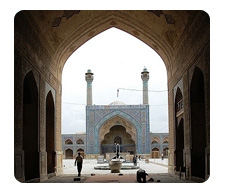 Raja
Passenger Trains [[2]] is the passenger rail system.
Travelling by train through Iran is generally
more comfortable and faster than speed-limited
buses. Sleeper berths in overnight trains are
especially good value as they allow you to get
a good night's sleep while saving on a night's
accommodation. Raja
Passenger Trains [[2]] is the passenger rail system.
Travelling by train through Iran is generally
more comfortable and faster than speed-limited
buses. Sleeper berths in overnight trains are
especially good value as they allow you to get
a good night's sleep while saving on a night's
accommodation.
The rail network is comprised of three main trunks.
The first stretches east to west across the north
of the country linking the Turkish and Turkmenistan
borders via Tabriz, Tehran and Mashhad. The second
and third extend south of Tehran but split at
Qom. One line connects to the Persian Gulf via
Ahvaz and Arak, while the other traverses the
country's centre linking Kashan, Yazd and Kerman.
Tickets can be bought from train stations up to
one month before the date of departure, and it
is wise to book at least a couple of day in advance
during the peak domestic holiday months. First
class tickets cost roughly twice the comparable
bus fare.
By taxi
Low fuel costs have made inter-city travel by
taxi a great value option in Iran. When travelling
between cities up to 250 km apart, you may be
able to hire one of the shared savāri taxis that
loiter around bus terminals and train stations.
Savari taxis are faster than buses and Taxis will
only leave when four paying passengers have been
found, so if you're in a hurry you can offer to
pay for an extra seat.
Official shared local taxis, identifiable by some
kind of orange paint marking, also ply the major
roads of most cities. Their usually run straight
lines between major squares and landmarks, and
their set rates (between IR 1,000 and IR 5,000)
are dictated by the local governments.
Hailing one of these taxis is an art you'll soon
master. Stand on the side of the road with traffic
flowing in your intended direction and flag down
a passing cab. It will slow down fractionally,
giving you about one second to shout your destination--pick
a major nearby landmark instead of the full address--through
the open passenger window. If the driver is interested,
he'll slow down enough for you to negotiate the
details.
If you're in a hurry, you can rent the taxi privately.
Just shout the destination followed by the phrase
dar bast (literally 'closed door') and the driver
will almost be sure to stop. Negotiate the price
before departure, but since you are paying for
all the empty seats expect to pay five times the
normal shared taxi fare.
You can also rent these taxis by the hour to visit
a number of sites, but you can expect to pay from
IR 10,000 to 20,000 per hour, depending on your
bargaining skills.
By car
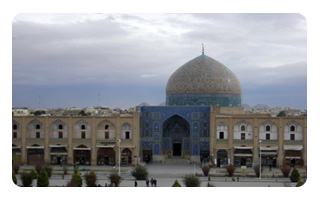 A
large road network and low fuel costs of historically
made Iran an attractive country for exploring
with your own car. However a recent government
fuel tax on foreigners entering Iran by private
car has somewhat dimmed the allure. A
large road network and low fuel costs of historically
made Iran an attractive country for exploring
with your own car. However a recent government
fuel tax on foreigners entering Iran by private
car has somewhat dimmed the allure.
Foreigners arriving in Iran with their own car
will need to have a carnet de passage and a valid
international drivers' license. Petrol stations
can be found on the outskirts of all cities and
towns and in car-filled Iran, a mechanic is never
far away.
Do not underestimate the sheer chaos of Iran's
traffic, particularly in Tehran. The often ignored
road rules state that you must drive on the right
unless overtaking and give way to traffic coming
on to a roundabout. Drivers frequently top 150
km / hour on intercity highways a new law requiring
car occupants to wear seatbelts is laughed at
more often than complied with.
Be aware also that motorcycles will be often be
seen transporting up to five people, sans helmets.
Talk
Persian (called Farsi in Persian), an Indo-European
language, is Iran's national and official language.
Although written with a modified Arabic alphabet,
the two languages are not related but Persian
does have many loan words from Arabic.
Many young Iranians in major cities, and almost
certainly those working in international travel
agents and high-end hotels will speak conversational
English but basic Persian phrases will definitely
come in handy, particularly in rural areas.
Road signs are often double signed in English,
but few other signs are. As an extra challenge,
most Persian signage uses an ornate calligraphic
script that bears little resemblance to its typed
form. This can make comparing typed words in phrase
books--such as 'bank' and 'hotel'--to signs on
buildings quite difficult. However it is still
worth memorizing the Persian script for a few
key words such as restaurant, guesthouse, and
hotel (see relevant sections below for the script).
Be aware that Kurdish and Azeri languages are
also spoken in areas of large Kurdish and Azeri
populations.
Buy
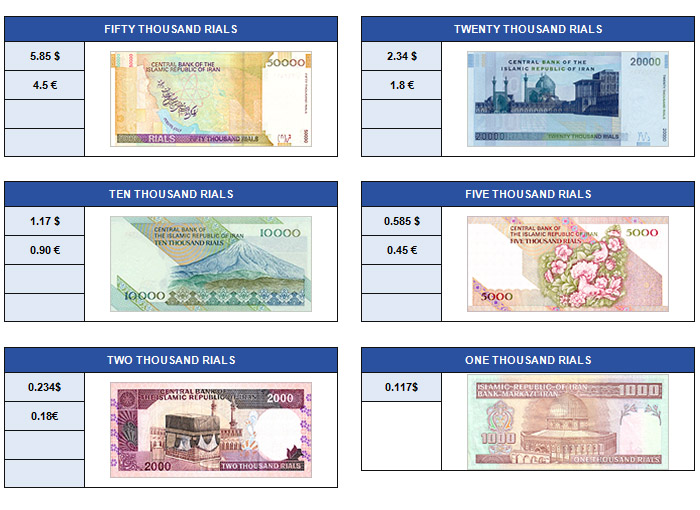
Currency(Rates in July 2006)
1$: 9122 Rials
1GBP:15884 Rials
100JPY: 7697 Rials
1EUR: 11700 Rials
1CHF: 7013 Rials
The rail is the official currency of Iran; however
to save time in a high-inflation economy prices
are sometimes quoted in tomans. One to man is
equal to ten rails.
As a general guide, written prices are given in
rials and prices quoted in conversation are in
tomans. To confuse you even further, shopkeepers
will often omit the denomination of high prices,
so you may be told a jar of coffee costs 2 tomans
(meaning 2,000 tomans or IR 20,000) and that a
fine rug will cost 3 tomans (meaning 3,000,000
tomans or IR 30,000,000). In conversation, 1 Chomejni
denotes IR 10,000.
Most travelers spend the first few day of their
trip coming to grips with this mind-boggling system,
and money changers on the border will often exploit
this confusion to rip you off. Be careful, and
if in doubt, always ask a shopkeeper or moneychanger
if they are quoting a price in rails or tomans.
Carrying money
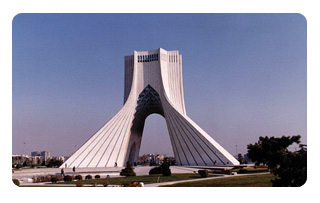 Iran
is still a cash economy, so bring enough hard
currency for the duration of your stay. US dollars
are the most useful, and new bills in good condition
are preferred, even getting a better rate. Trade
embargoes mean that banks will not forward cash
advances on your foreign credit cards and they
are only accepted by select stores for large purchases,
such as Persian rugs. Most will be happy to forward
you some cash on your credit card at the same
time as your purchase. If you are desperate for
cash, you can also try asking these shops to extend
you the same favour without buying a rug or souvenir,
but expect to pay dearly for the luxury. Iran
is still a cash economy, so bring enough hard
currency for the duration of your stay. US dollars
are the most useful, and new bills in good condition
are preferred, even getting a better rate. Trade
embargoes mean that banks will not forward cash
advances on your foreign credit cards and they
are only accepted by select stores for large purchases,
such as Persian rugs. Most will be happy to forward
you some cash on your credit card at the same
time as your purchase. If you are desperate for
cash, you can also try asking these shops to extend
you the same favour without buying a rug or souvenir,
but expect to pay dearly for the luxury.
Travellers' cheques Although in theory central
banks in provincial capitals are able to cash
them, the paperwork and time involved make them
impractical for tourist use.
ATMs exist in major cities, and there are point-of-sale
devices in some larger stores, but only local
bank cards are accepted. Bank Tejarat is now providing
a prepaid smart-card service for foreign tourists
travelling to Iran. Using this service, you can
buy a prepaid smart-card with foreign currency
which can be used on the domestic ATM and point-of-sale
network for withdrawing rials. You can apply for
this service at some travel agents, if they support
the service, or by visiting the special Tejarat
Bank kiosk in Tehran's Mehrabad international
airport. Before your departure, the remaining
credit on the card can be changed back to foreign
currency. Since the domestic ATM network is prone
to malfunctions, and point-of-sale devices aren't
common in stores, having a cash reserve (either
rails or foreign currency) is still recommended.
Money and daily life
There is little point in risking the black market
moneychangers who loiter outside of major banks
and only offer marginally better rates than the
banks. Central banks in most cities will change
money for you, but the process can be a drawn
out affair requiring signatures from countless
officials and a fair deal of running around.
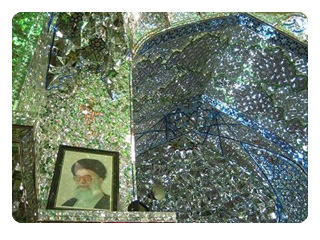 A
better compromise is the private exchange offices
(sarāfi) scattered around most large cities and
major tourist centres. Although their rates are
comparable to those of the banks, they are far
quicker and, unlike their black market colleagues,
they can be traced later on if something goes
wrong. A
better compromise is the private exchange offices
(sarāfi) scattered around most large cities and
major tourist centres. Although their rates are
comparable to those of the banks, they are far
quicker and, unlike their black market colleagues,
they can be traced later on if something goes
wrong.
The most widely-accepted currency is the US dollar,
but Euros and UK pound sterling can also be changed.
$100 notes attract the highest prices, and you
will be quoted lower rates for any old or ripped
notes.
Bargain ruthlessly when buying handcrafts, rugs
or big ticket items and modestly when hailing
private taxis. In most other aspects of life prices
are fixed. Tipping is generally not expected,
but locals will generally round up the bill in
taxis and add around 10% in classy restaurants.
Porters and bellboys will expect IR 2,000 - 3,000.
A discreet gift of a few thousand tomāns may help
grease the wheels of Iranian society and serve
to thank an extraordinarily helpful local, but
baksheesh and bribing are not a major part of
Iranian life.
You won't be able to escape the government-sanctioned
dual pricing system that applies to accommodation
and some tourist attractions in Iran; foreigners
often pay up to ten times the price quoted to
locals. However thanks to the government's recent
commendable efforts to eliminate 'foreigner' prices
from many tourist attractions, most notably Persepolis,
low food and transport costs make Iran a cheap
travel destination.
If you are prepared to stay in the cheapest guesthouses,
travel only by bus and eat only at fast food outlets
or kabābis, you can get by in Iran on a minimum
of around IR 100,000 per Day. If you want to eat
a decent restaurant meal every now and then and
stay in mid-range accommodation, a more realistic
budget is around IR 250,000. If you want to eat
and sleep in luxury and fly between major sights,
you can easily chew through IR 700,000 per Day.
Eat
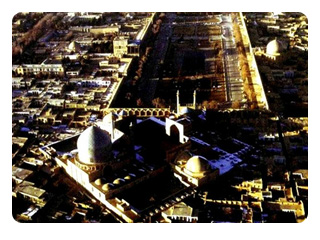 The
good news for travelers is that Iranian cuisine
is superb. A wide range of influences from Central
Asia, the Caucasus's, Russia and the Middle East
have created a diverse, relatively healthy range
of dishes that focus on fresh produce and aromatic
herbs. The bad news, however, is that Iranians
prefer to eat at home, rather than in restaurants,
so decent eateries are scarce and stick to a repetitive
selection of dishes (mainly kebabs). An invitation
to an Iranian home for dinner will be a definite
highlight of your stay. The
good news for travelers is that Iranian cuisine
is superb. A wide range of influences from Central
Asia, the Caucasus's, Russia and the Middle East
have created a diverse, relatively healthy range
of dishes that focus on fresh produce and aromatic
herbs. The bad news, however, is that Iranians
prefer to eat at home, rather than in restaurants,
so decent eateries are scarce and stick to a repetitive
selection of dishes (mainly kebabs). An invitation
to an Iranian home for dinner will be a definite
highlight of your stay.
Traditional cuisine
Fragrant rice (berenj) is the staple of Iranian
food. Boiled and then steamed, it is often colored
with saffron or flavoured with a variety of spices.
When served plain as an accompaniment it is known
as chelo . The two most common meat / chelo combinations
are kebab variations (chelo kabāb) or rotisserie
chicken (chelo morgh). Flavoured rice, known as
polo, is often served as a main course or as an
accompaniment to a meat dish. Examples include
shirin polo falvoured with orange zest, young
cherries and honey glazed carrots, the broad-bean
and herb heavy bāghli polo and sabzi polo laced
with parsley, dill and mint.
The rice and kebab dish chelo kabāband its half-dozen
variations are the most common (and often the
only) items on Iranian restaurant menus. A grilled
skewer of meat is served on a bed of fluffy rice,
and accompanied by an array of condiments. You
can add butter, grilled tomatoes and a sour spice
known as somāgh to your rice, while some restaurants
also provide a raw egg yolk. Raw onion and fresh
basil are used to clear your palate between mouthfuls.
Variations in kabāb dishes come from the meats
they are served with. You will commonly see:
- Kabāb koobideh - a kebab of minced beef, shredded
onion and spices.
- Kabāb barg - pieces of lamb marinated in lemon
juice and shredded onion.
- Kabāb makhsoos- usually the most expensive option,
this kebab uses the highest quality meat.
- Joojeh kabāb- a skewer of chicken pieces marinated
in lemon juice and saffron.
- Kabāb bakhtiāri - great for the indecisive eater,
this is a skewer of alternating chicken and lamb
pieces.
At home people most often eat rice with a thick
stew (khoresht) containing a modest amount of
meat. There are dozens of khoresht variations
such as the sweet and sour fessenjān made from
ground walnuts and pomegranate syrup, ghormeh-sabzi
based on fresh herbs, dired limes and kidney beans,
gheimeh flavoured with split-peas and often garnished
with French fries, and the sweet sib-āloo which
uses apples and plums.
Hearty Iranian soups (āsh) are meals in themselves.
The most popular is the vegetarian āsh reshteh
made from herbs, chickpeas and thick noodles,
and garnished with yoghurt and fried onions.
Flat bread (nān) is another pillar of Iranian
food. It is served at breakfast with herbs, feta
cheese and a variety of jams, or as an accompaniment
to meals. Sangak is a dimpled variety cooked on
a pebbled oven while lavāsh is a thin and bland
staple.
Fast food and snacks
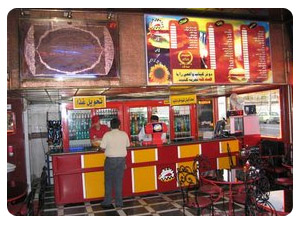
A common fast food venue
in Iran
Most food outlets in Iran are either kabābis or
fast food outlets serving a standard fare of burgers,
sandwiches, felafels or pizza. A burger and a
soft drink at a snack shop will fill you up at
lunchtime for around IR 10,000, while pizzas start
at IR 15,000.
Many teahouses (see Drink below) also serve traditional
snacks and light meals. The most common of these
is ābgusht a hot pot made from lamb, chickpeas
and dried limes that is also known as dizi, also
the name of the dish in which its served. You
will be given a bowl (the dizi) containing the
ābgusht and another, smaller one. Drain the broth
into the smaller bowl and eat it like a soup with
the bread provided. Then pound the remaining meat
and vegetables into a paste with the pestle provided
and eat with even more bread, pieces raw onion
and wads of fresh herbs.
Sweets and desserts
The neverending demand for dentists in Iran lies
testament to the country's obssession with sweets
and pastries, known collectively as shirini .
Iranian baghlava tends to be harder and more crystalline
than its Turkish equivalent while the pistachio
noughat called gaz is an Esfahan speciality. Sohan
is an rich pistachio brittle popular in Qom, and
freshly-baked pastries are often taken as gifts
to people's houses. Lavāshak fruit leathers are
delicious fruit leathers made from dried plums.
Honey-saffron and pistachio are just two local
flavours of ice cream, while fāloodeh is a deliciously
refreshing sorbet made from rosewater and vermicelli
noodles served with lashings of lemon juice.
Special needs
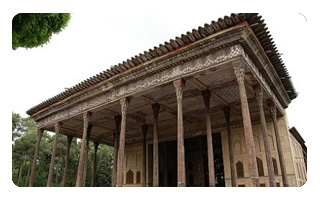 Given
that most travellers are stuck eating kebabs for
much of their trip, vegetarians will have a particularly
difficult time in Iran. Most snack shops sell
felafels and garden salads (sālād-e-fassl) and
greengrocers are common. Most ash varieties are
meat-free and filling, as are most variations
of kookoo, the Iranian take on the frittata. The
phrases man giah-khor hastam (I am vegetarian)
and bedoon-e goosht (without meat) will come in
handy. Given
that most travellers are stuck eating kebabs for
much of their trip, vegetarians will have a particularly
difficult time in Iran. Most snack shops sell
felafels and garden salads (sālād-e-fassl) and
greengrocers are common. Most ash varieties are
meat-free and filling, as are most variations
of kookoo, the Iranian take on the frittata. The
phrases man giah-khor hastam (I am vegetarian)
and bedoon-e goosht (without meat) will come in
handy.
It's a safe bet that all food in Muslim Iran is
halal, but those seeking a kosher or other diet
may have some trouble. If in doubt, stick to vegetables.
Drink
Black tea (chāi) is the national drink of alcohol-free
Iran. It is served strong and with crystallised
or cubed sugar (ghand) which is held artfully
between the teeth while tea is sipped through.
You can try asking for milk in your tea, but expect
nothing but strange looks in return.
Tea houses (chāi khāneh) are favourite local haunt
for men (and less commonly families) to drink
tea and puff away on a water pipe.
Lovers of coffee (ghahveh) have little to cheer
in Iran but their choices have increased recently.
Where available, it is served Turkish style, French
coffee or espresso. Imported instant coffee (nescāffe)
and instant Cappuccino are available also.
A wide variety of fruit juices (āb miveh) and
drinks are available from shops and street vendors
including cherry cordial (sharbat ālbāloo) and
banana milkshakes (shir moz).
Very common refreshment is the ZamZam, an equivalent
to traditional western non-alcoholic drinks as
Cola, Sprite, Fanta.
Doogh is a sour drink made from yoghurt, salt,
and water (sometimes gaseous) and sometimes flavoured
with mint or other plants. It takes some getting
used to, but will rehydrate you quickly in the
heat of Iran's summer.
Drinking alcohol is illegal, and if seen by police
may be met with punishment. Of course, you will
not find any place in Iran that openly sells alcohol.
Drinking is, however, common among people especially
during parties and weddings.
Sleep
Accommodation in Iran ranges from luxurious, if
a little weary, five star hotels in major cities
to the small, cheap mosāferkhuneh and mehmānpazir
guesthouses that are littered about most centres.
Moreover, staff in mosāferkhuneh often are so
happy to provide room for non-Iranians, as these
facilities have a recommandation from local governments
to serve all tourists.
Stay safe
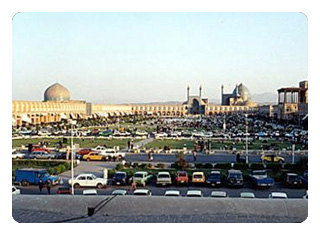 Iran
is still a relatively low crime country, although
thefts and muggings have been on the increase
in recent years. Keep your wits about you, and
take the usual precautions against Pickpockets">
pickpockets in crowded bazaars and busses. Iran
is still a relatively low crime country, although
thefts and muggings have been on the increase
in recent years. Keep your wits about you, and
take the usual precautions against Pickpockets">
pickpockets in crowded bazaars and busses.
In particular, the tourist centre of Esfahan has
had problems with muggings of foreigners in unlicensed
taxis, and fake police making random checks of
tourists' passports. Only use official taxis,
and never allow 'officials' to make impromptu
searches of your belongings.
Try not to travel in the southeastern area of
Iran, meaning the provinces of Sistan and Baluchistan,
and also to some degree Southern Khorasan province.
Drug trade is very common with smuggling from
Afghanistan and other crimes as robbery, killing
and kidnapping. Some cities as Zahedan, Zabol
and Mirjaveh are particularly dangerous but that
doesn't mean that every place in this area of
Iran is dangerous, Chahbahar which is close to
the Pakistani border is a very calm and friendly
city.
Anyone crazy enough to venture within firing distance
of the trouble-plagued borders of Iraq and Afghanistan
is asking for trouble.
Women travellers should not encounter any major
problems when visiting Iran, but will undoubtedly
be the subject of at least some unwanted attention.
Perceptions of Western women among local men,
fuelled largely by satellite television and Baywatch
reruns, have led to the assumption that all foreign
women like to dress and act like Pamela Anderson.
A stern look should be enough to deter amorous
locals.
Gay and lesbian travellers should err on the side
of discretion in Iran. Under the strict Sharia
law, sodomy is punishable by death and lesbian
sex is punishable with lashes, though this law
only applies to Iranian citizens and those who
engage in such activities with Iranian citizens.
While public displays of platonic affection between
members of the same sex -- such as holding hands,
arms draped over shoulders and kissing on the
cheek -- are not uncommon, foreign visitors who
are gay or lesbian probably should be very discreet
considering the possibility of harassment by security
forces. The vast majority of Iranians have unfavorable
views of same-sex relationships, but this rarely
manifests in personal, violent attacks against
homosexuals. In the event that a gay or lesbian
visitor is somehow "outed," they can
be expected to be immediately deported.
Watch out for joobs, the open storm water drains
that shoulder every road and are easy to miss
when walking in the dark.
Ignore the media hype; your chances of facing
anti-Western sentiment as a traveler are slim.
Iranians make a clear distinction between the
Western governments they distrust and individual
travelers who visit their country. Americans may
receive the odd jibe about their government's
policies, but nothing more serious than that.
However, it is always best to err on the side
of caution and avoid politically-oriented conversations,
particularly in taxi cabs.
Iranian traffic is horrendous. Drivers attack
their art with an equal mix of aggressiveness
and incompetence and view road rules as mere guidelines.
Take care when crossing the roads, and even greater
care when driving on them.
There are alot of military and other sensitive
facilities in Iran. Photography near military
and other government installations is strictly
prohibited. Any transgression may result in detention
and serious criminal charges, including espionage,
which can carry the death penalty. Do not photograph
any military object, jails, harbors, or telecommunication
devices, airports or other objects and facilities
which you suspect are military in nature. Be aware
that this rule is taken very seriously in Iran.
Stay healthy
Apart from being up to date with your usual travel
vaccinations (tetanus, polio, etc) no special
preparation is needed for travel to Iran.
Tap water is safe to drink in most of the country
(and especially the cities), although you may
find the chalkiness and taste off-putting in some
areas (mainly Qom, Yazd, Hormozgan and Boushehr
provinces). Bottled mineral water (āb madani)
is available everywhere. Also, on many streets
and sites, public water fridges are installed
to provide drinking water - quality comparable
to bottled water.
Respect
Despite progress in recent years, the pace of
liberalization in Iran remains slow and its legally-enforced
Islamic codes of conduct dictate many aspects
of public life. Respecting the dozens of unspoken
rules and regulations of Iranian life can be a
daunting prospect for travelers, but don't be
intimidated. As a foreigner you will be given
leeway and it doesn't take long to acclimatize
yourself.
Dress
Perhaps the most visible mark of Iran's Islamic
leanings is the conservative dress expected of
its citizens. Although normal, Western style clothing
is acceptable in private homes, when in public
women are required to cover everything but their
face, hands and feet.
The most common uniform consists of a head scarf
(roo-sari, ?????) to conceal the head and neck,
a formless, knee-length coat known as a roo-poosh
(?????) and a long dress or pair of pants. In
and around holy sites, you will be expected to
dress even more modestly in a chādor, a full-length
swathe of black cloth designed to cloak everything
but your face from view.
The dress code can be daunting during your preparation,
but roo-saris, roo-pooshes and chādors can be
bought cheaply in Iran. Watch or ask friendly
Iranian women for guidance and marvel at how young
women are pushing the boundaries of modesty with
colorful head scarves that cover only a fraction
of their hair and figure-hugging roo-pooshes that
reveal every curve of their bodies.
Men have a slightly easier time of things. Short-sleeved
shirts and t-shirts are acceptable for daily wear,
but long sleeved shirts are still required for
holy sites and formal occasions. Shorts and three-quarter
length pants are only acceptable on the beach.
Conduct
Iran is a publicly segregated society. Many facilities
such as transport and mosques are segregatated
and extended social interaction between men and
women who are not related or married is eyed with
suspicion.
Greet people of the same sex with a handshake,
three kisses or both, but avoid physical contact
with unrelated people of the opposite sex. Place
your hand over your heart and bow slightly to
greet them instead.
You will struggle to find Iranians happy with
the current regime, but be careful of initiating
political discussions. Although political freedom
has increased in recent years, vocal opposition
can be more trouble than it's worth.
Visiting holy sites
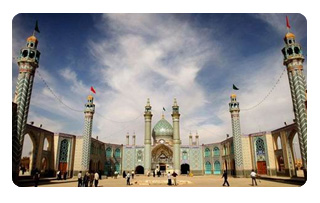 Although
no trip to Iran would be complete without a glimpse
at the stunning architecture and sombre environments
of its mosques or holy shrines, many travellers
are daunted by the prospect of walking into the
foreign world of a mosque. Don't let these fears
stop you; Iranians are welcoming and will understand
any unintended breach of protocol. Although
no trip to Iran would be complete without a glimpse
at the stunning architecture and sombre environments
of its mosques or holy shrines, many travellers
are daunted by the prospect of walking into the
foreign world of a mosque. Don't let these fears
stop you; Iranians are welcoming and will understand
any unintended breach of protocol.
Some mosques, and most holy shrines, require women
to be wearing a chādor before entering the complex.
If you don't have one, there are sometimes kiosks
by the door that lend or hire chādors. It is better
for men to wear long-sleeved shirts inside a mosque
or shrine, though this is not mandatory.
Shoes are not worn within prayer areas of a mosque
or shrine. Busier mosques have free shoe repositories
where you trade your shoes for a token. Also try
to avoid mosques on the holy Day of FriDay and
don't photograph a mosque while prayers are taking
place.
Holy shrines, like those in Mashad and Qom, are
usually off limits to non-Muslims, although the
surrounding complexes are usually OK. Always ask
first before you enter a room you are unsure of.
Contact
The number 110 is the police number without any
code but you may also access emergencies via this
number. Other Emergency Services are also available
via 115 for Ambulances and 123 for the Fire Department.
Americans must go to the US Interests Section
in the Swiss Embassy for assistance. Services
are limited.
Phone
These are the area code for major cities Tehran(021)
- Isfahan(0311) - Tabriz(0411) - Mashad (0511)
- Shiraz(0711) - Ahvaz(0811)
Internet
Conservative forces within the Iranian government
have been wary connecting their country to the
adult content and politically dissident views
of the Internet. After a clampdown on unlicensed
internet cafes a few years ago, cafe-net facilities
are popping across all major cities and tourist
centers. Some (but not all) are double-signed
in English, so you may want to memories the Persian
script. If in doubt, any young Iranian should
be able to point you in the direction of the nearest
coffee net.
Some websites are blocked based on words appearing
in their URL, although savvy coffee net users
may be able to show you how to circumvent these
restrictions. You can expect to pay between IR
4,000 - IR 9,000 per hour and speeds range from
acceptable in major cities, to the infuriatingly
slow in small towns and rural areas. More recently,
some facilities in major cities use broadband
wireless or DSL connections. Most coffee net places
will also have a CD burner for downloading photos
from digital cameras.
You may also find the Internet connection in most
of middle-class Iranian homes.
|



